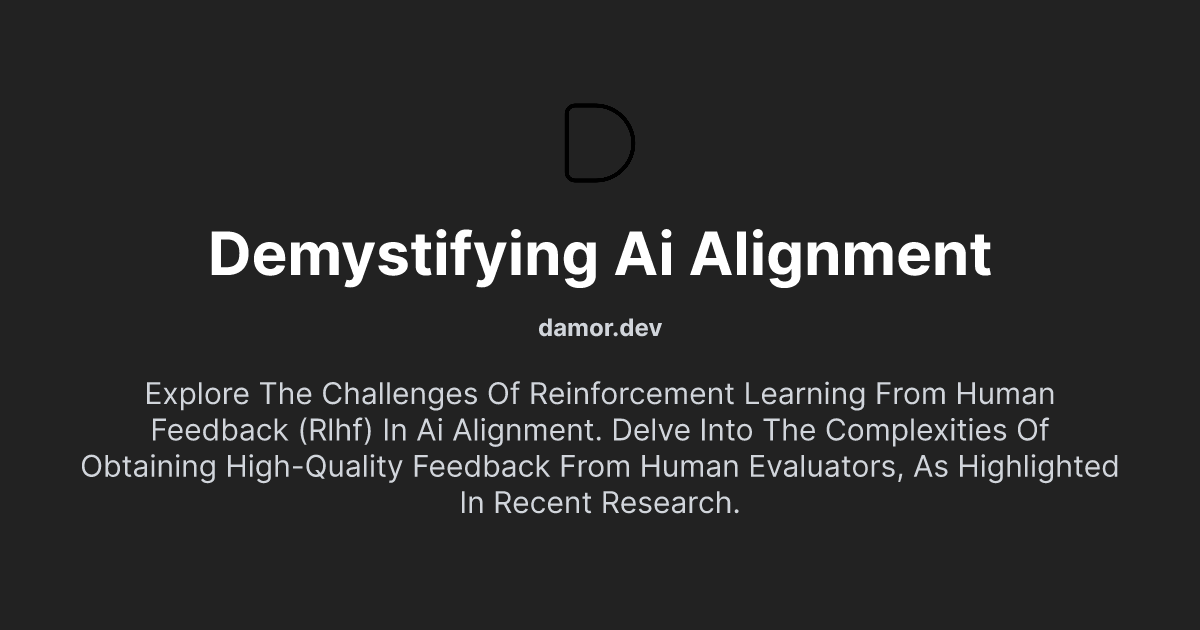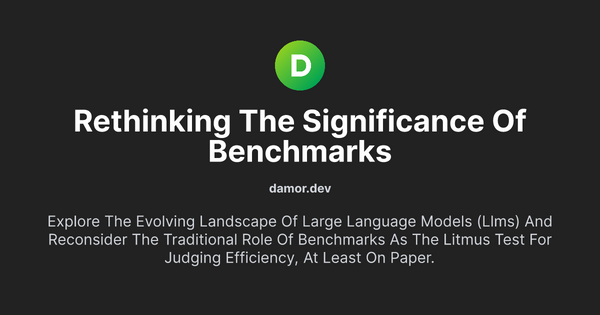Demystifying AI Alignment

Understanding AI Alignment: A Simplified Overview
- Key Point: OpenAI's success with ChatGPT relies on Reinforcement Learning from Human Feedback (RLHF).
- Challenge 1: Obtaining Quality Feedback
- RLHF improves AI models through interactions with human evaluators.
- However, this process introduces biases and reduces model robustness.
- A recent paper highlights challenges, with obtaining high-quality feedback being a primary issue.
- Challenge 2: Human Feedback Limitations
- Humans, though valuable, have limitations and biases that can affect feedback quality.
- Misaligned evaluators may struggle to understand AI context, leading to suboptimal feedback.
- Supervising long conversations complicates accurate model assessment.
- Data Quality Concerns
- Inconsistent or inaccurate feedback may occur due to limited attention, time constraints, and cognitive biases.
- Even well-intentioned evaluators may disagree due to subjective interpretations.
- Feedback Forms
- RLHF uses various forms of feedback (binary judgments, rankings, comparisons), each with strengths and weaknesses.
- Choosing the right form for an AI task is complex, potentially leading to training discrepancies.
- Reward Function Complexity
- Accurately representing individual human values with a reward function is a fundamental challenge.
- Human preferences are context-dependent, dynamic, and influenced by societal and cultural factors.
- Diversity of Evaluators
- Different evaluators have unique preferences, expertise, and cultural backgrounds.
- Consolidating feedback into a single reward model may overlook important disagreements and lead to biased AI models.
- Addressing Challenges
- Researchers should explore nuanced techniques like ensemble reward models and personalized reward models to capture diverse human values.
- Transparently addressing biases in data collection and thorough evaluations are crucial for responsible AI development.
- Alignment Tax
- RLHF leads to over-finetuning, known as the "alignment tax."
- This phenomenon incurs extra costs for AI systems to stay aligned, potentially hindering overall performance.
- Alternative Approaches
- Some challenges in RLHF may not have complete solutions through technical progress alone.
- Researchers should be cautious about relying solely on RLHF for AI alignment.
- Uncensored models, not undergoing RLHF, may outperform aligned models in certain cases.


![[Solved] ZlibError:zlib:
unexpected end of file - payload](/content/images/size/w600/2024/02/Screenshot-2024-02-18-143905.png)


